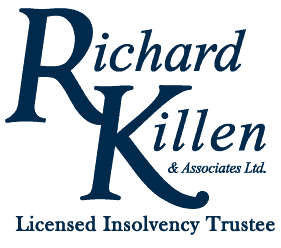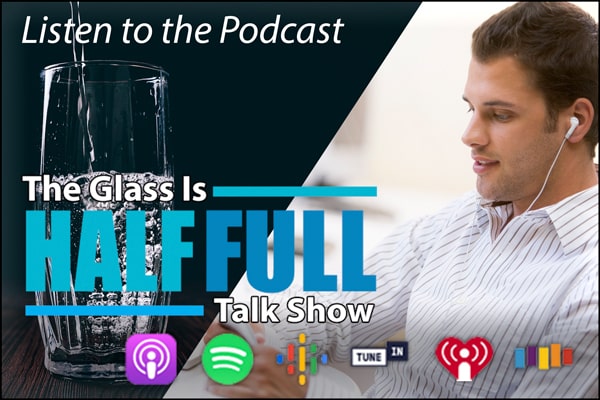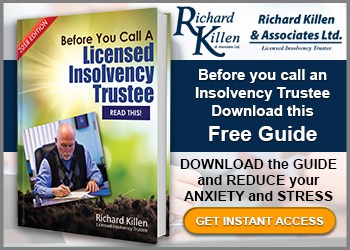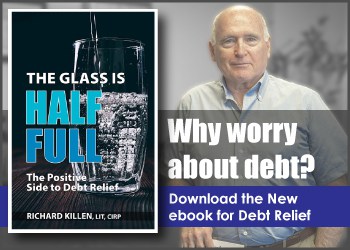CAIRP Press Release
Fewer Canadians seeking debt relief during COVID crisis, those struggling urged to seek help from licensed professionals.
According to a press release by the Canadian Association of Insolvency and Restructuring Professionals (CAIRP) they suggest that many people who should be seeking the services of a Licensed Insolvency Trustee are not. It seems that between government relief programs and creditors offering payment deferrals many do not feel the urgency to deal with their debt problems. Read the release below.

TORONTO – May 11, 2020 – After consistently climbing higher over the last year, the number of Canadians who filed for insolvency in the first quarter of 2020 was down 5.5 per cent compared to the previous quarter, according to the latest official figures released today. In March alone consumer insolvencies decreased by 8.5 per cent compared to the same time last year.
The decline is largely the result of increased payment flexibility among creditors, landlords and administrators coupled with temporary income supports provided by the government. While these measures have allowed many to make ends meet, bankruptcy professionals agree that consumer insolvencies will spike in the wake of the coronavirus pandemic.
“For those who were already overstretched with more debt than they could reasonably afford, the government relief and short-term payment reprieve have allowed many to stay afloat. But their underlying debt is a gaping hole in the lifeboat,” says Mark Rosen, Chair of the Canadian Association of Insolvency and Restructuring Professionals (CAIRP). “The pandemic will magnify the debt problems Canadians were already facing and insolvency will be the way out for many.”
Prior to the widespread income shock and economic uncertainty brought on by COVID, consumer insolvencies were already on the rise in Canada. In spite of the dip in the first quarter, the total number of insolvencies for the 12-month period ending March 31 increased by 8.4 per cent compared to the same period last year.
With no clear end to the pandemic in sight, Rosen says that severely indebted Canadians should seek professional advice now from Licensed Insolvency Trustees before they find themselves even more in over their heads.
Licensed Insolvency Trustees are federally regulated debt professionals who can offer guidance regarding all of the debt-relief options available to Canadians. With solid accounting expertise and extensive knowledge of governing legislation, they are empowered to provide protection from creditors and can discharge people from debt. They take a customized approach to determine which restructuring option is most suitable based on individual circumstances.
If it is determined that bankruptcy or proposal is the best course of action, the dual role of the Licensed Insolvency Trustee is to ensure that the debtors’ rights are not abused while protecting the rights of creditors.
“For individuals and families in financial distress, the insolvency process is really about moving forward after hardship to focus on a brighter future. For creditors, the process formalizes negotiations and cushions losses,” says André Bolduc, executive board member of (CAIRP) and Licensed Insolvency Trustee.
He points out that as soon as an individual files for insolvency, they are protected from creditors, which can also include protection from collection agency calls and wage garnishment.
“It’s so easy to become paralyzed with fear or shame and let the bills pile up even more but that is the absolute worst thing you can do right now. You do not need to tough out this crisis on your own. Help is available,” adds Bolduc.
In an effort to maintain social distancing measures while continuing to support those in need of financial assistance, many Licensed Insolvency Trustees across the country are providing free contactless consultations virtually or by phone.
You may read the press release here.
If you are in debt, we are here to help you with a debt solution whether it be a consumer proposal or a bankruptcy. Talk to us. We offer a free consultation by phone or by video chat. Call us at 1-888-545-5365
What Debt Do You Pay First During a COVID-19 Financial Emergency?

The world has been brought almost to a stop as we focus on fighting the spread of the coronavirus. Throughout Canada, we see business after business shut down and hundreds of thousands of people laid off. Some closures may be temporary, for some it may be permanent as they may not be able to recover after the crisis has abated.
While these closures may be necessary to deal with the virus, there are significant financial consequences to individuals and families. For Canadians who are living paycheck to paycheck this means that even a temporary reduction is going to cause a lot of problems.
If you are facing unpaid bills during this uncertain time, what debt should you focus on? What bills do you choose to pay first? Here are a few things to consider:
- If you are working, continue paying your bills and debts on time. Avoid the deferral programs if you do not need the financial help now, just go on and keep making those payments. If nothing else, make sure to make at least your minimum payments to avoid late charges, penalties, and potential negative hits to your credit.
- If you have been laid off or expect to be out of work in the coming weeks, you may need to look at prioritizing payments.
FOCUS ON HIGH PRIORITIES
High priority debts are generally the bills where a service will be shut off or an asset is in danger of repossession.
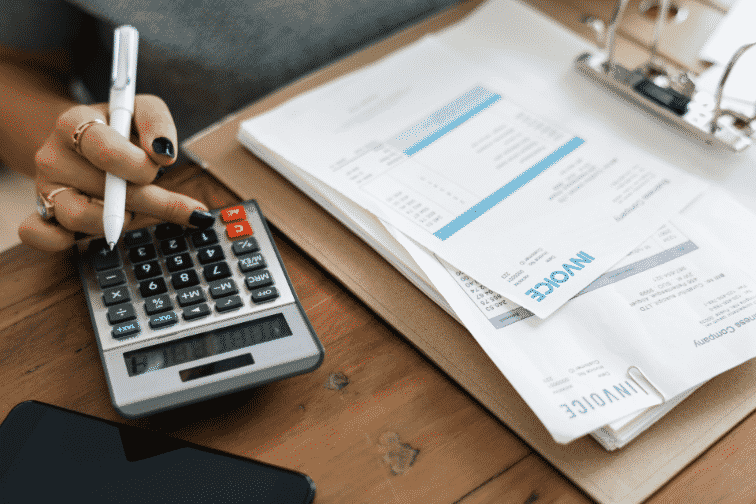
Utilities
You need to pay your utility bills to keep the lights on, the water running, and the gas line open especially during the lockdown period and you have to stay at home. These bills are top priority so you can keep your home safe and healthy in these unreliable times.
If you receive your hydro bill, and fear you cannot make the payment for the coming months, you may be protected by the disconnection ban, at least until July 31.
In Ontario, the Ontario Energy Board (OEB) has implemented protective measures that prohibits all electricity distributors in the province from disconnecting power because of non-payment until July 31. There will also be a rollback on electricity rates as part of cost-saving measures in response to the coronavirus outbreak.
To find out if you are covered by the disconnection ban and the rollback on electricity rates, read the full details here.
Communication Bills
You may also want to prioritize your cell phone bill and internet bill especially in the lockdown period or if you are self-quarantining at home. These will be major channels for you to be able to access information about what’s happening globally and stay in touch with family and friends, so keep paying them to keep the lines open.
Rent

Your home has become your greatest protection against COVID-19. If you are one of the 33% of Canadian households who are renting their homes, understandably you will want to focus on paying your rent as high priority. If you’re struggling to make the rent owing to the impact of coronavirus, don’t panic. Several provinces, including Ontario, Nova Scotia and New Brunswick have already issued temporary bans on evictions. This means you won’t be kicked out for as long as the eviction ban is in effect, although your landlord may still issue a notice of late payment of rent and may file the applications when the court resumes.
If you think you can’t pay your rent this month, the best thing to do is to talk with your landlord. Offer to pay what you can, even if it’s only part of the rent. This will help ensure you are not too far behind when things return to normal.
If this crisis looks like it will last for months, and it may, contact us so we can look at your situation in total and perhaps help you deal with the rent arrears then.
If you are having issues with your landlord, please find more information and resources on our blog’s section for Housing Help.
Our general advice is if you don’t have enough money to pay all of the bills, focus first on paying your utilities and rent before paying the other bills such as credit cards, medical bills, or other unsecured debts. As soon as you can, contact your landlord and service providers and see what they can do to assist you.
SECURED CAR LOANS AND HOMES LOANS
If you are paying a debt that is secured by an asset like your home or your vehicle the debt is classified as a secured debt guaranteed by the asset. This means that there are real consequences for not paying these debts – you risk having your car repossessed if you can’t make car loan payments and you can risk losing your home for nonpayment of mortgages. Hence, these are important, but not very immediate needs, to focus on as well.
What to do If you are falling behind on car payments
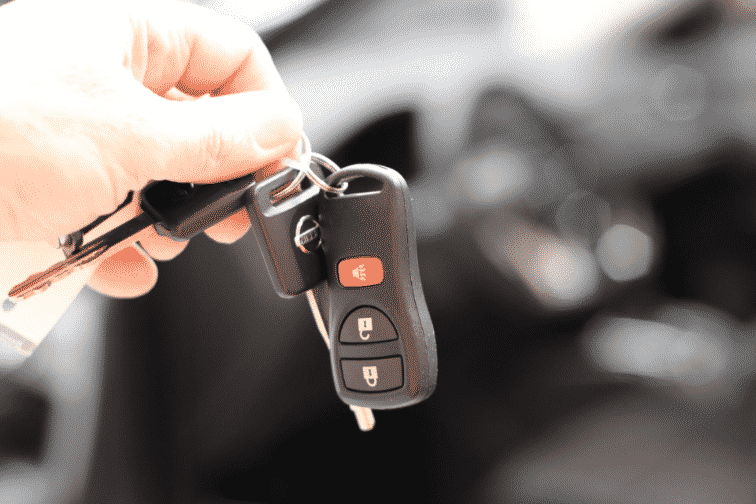
According to Ontario law, if you have been behind on the payments of your car loan, the lender has the legal authority to repossess the vehicle, and sell it to recover the amount you owe them. After the car is sold, if the amount is not enough to cover your car lease you will still have to pay the balance, and the lender could sue you and potentially garnish your wages.
Under normal circumstances, most lenders will not repossess a car until it is delinquent which means no payments have been made for 60-90 days. You can also take comfort in the fact that banks and lenders do not want to repossess your car as it usually entails that they take a financial loss. The repossession of a car is literally taken as the last resort. Hopefully, this will give you time to catch up on any missed payments.
In light of COVID-19 many of Canada’s banks and lending institutions are much more sympathetic to clients whose finances have been impacted by the health crisis and most are providing a deferment of payment on car loans for up to six months. If you see yourself starting to miss payments on your car lease, the best thing to do is reach out to your bank or car lender so they can assess your situation and see how to best help you.
Remember that banks and car lenders greatly prefer to keep the contract going rather than repossess the vehicle or house. They will normally be very willing to work on arranging a payment schedule.
What to do If you are falling behind on mortgage payments

In Ontario, a mortgage lender has the right to take possession of your home using either the power of sale or through a foreclosure if you default on your housing loan.
The good news is Canada’s banks and lending institutions are postponing mortgage payments for up to 6 months for those affected by the current health crisis. This will give you much needed time to catch up on payments.
The most reliable information on your mortgage options can be found at the Government of Canada and CMHC websites.
Another thing to keep in mind, lenders generally never start taking action for a power of sale or foreclosure as soon as you miss a single payment. The process for both is expensive and time consuming. They would rather work out an alternate payment plan to bring your mortgage back into good standing. If you are not able to pay your mortgage, the best advice is to contact your lender directly. They’ll look at your options and come up with a plan that will work best for your financial situation.
It is important to keep secure loan payments current, whether that’s a home loan or a car lease or some other loan that is tied to a valuable asset. If you think you’ll be unable to make an upcoming payment on any of these loans, the first thing to do is to reach out to your lender before you miss the payment and find out about deferrals or partial payments that can buy you some time. The key is to keep the loan on track so you can keep your assets.
CREDIT CARD DEBTS, MEDICAL BILLS, AND OTHER UNSECURED DEBTS

We do not advise anyone to stop payments on their credit card or other unsecured debts. However, we would put them at or near the bottom of the priority list when you are facing a financial crisis, such as now. The only reason we assess it this way is because there is the least immediate consequence for missing a few payments. With COVID-19 they will likely be the most flexible creditors to deal with. However, don’t ignore them either. If you can’t make a debt payment you should let them know so they won’t think they’re being forgotten or ignored.
In any case, the reality is that you may probably rely on your credit card or lines of credit to meet your immediate needs for food and medication because of your cash flow situation, and so you will have to keep on making payments to keep the credit lines open.
The good news is most credit card lenders are also offering up to six-month deferrals on credit card payments. This will give you time to reach out to your credit card company and possibly negotiate a payment plan that is best for your situation.
If you are worried about the uncertainty of your household finances right now and are having trouble organizing what debt to pay first during this financial emergency, make some priorities:
- Focus on meeting your immediate needs for food and medication
- Give importance to high priority utility bills like hydro, gas, internet
- Pay what you can on your rent or mortgage and talk with your landlord or mortgage lender about deferrals or partial payments.
- Meet the minimum on credit card payments and be very careful about taking on new debt, and if you must, make sure to keep your expenses and balances as low as you can.

If you have a lot of debt and are worried about how your finances can cope in this global pandemic, the best thing you can do right now is to talk with a Licensed Insolvency Trustee. We encourage you to be proactive so you can keep the best options open as long as possible.
We at Richard Killen and Associates continue to be committed to providing you with the best guidance and advice as you battle through this COVID-19 financial emergency. Our phones, emails and video chats remain open, call us at 1-888-545-5365 for a free consultation now.
How to Pay Off Holiday Credit Card Debt Quickly
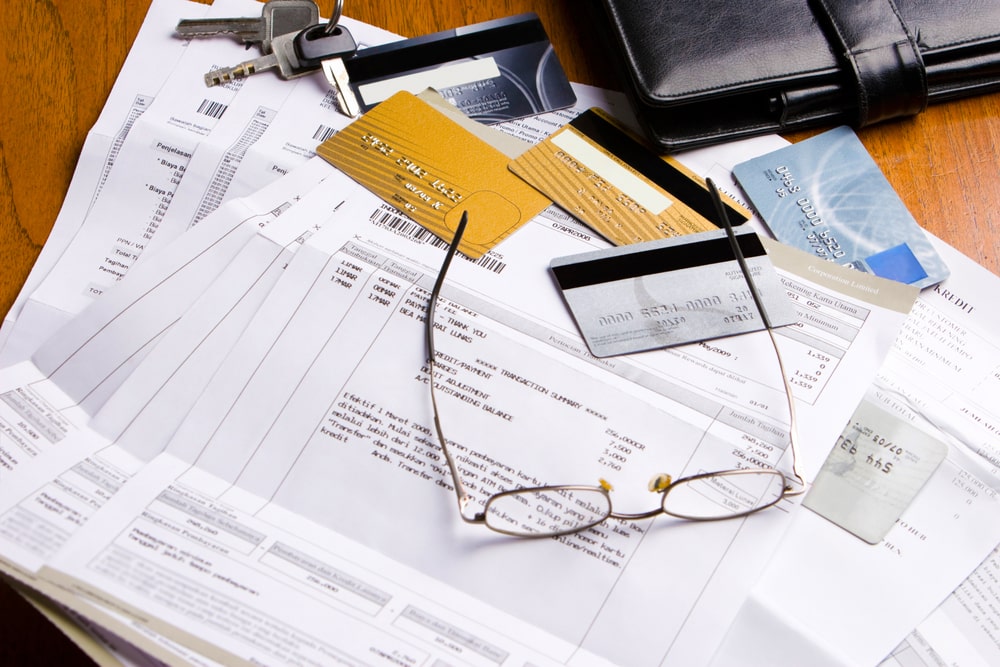 You’re now looking at your bank statements and credit card bills with wide eyes, and the amount of cash you’ve blown this past December is finally starting to sink in. It gets you wondering: What can I do to pay off holiday credit card debt quickly?
You’re now looking at your bank statements and credit card bills with wide eyes, and the amount of cash you’ve blown this past December is finally starting to sink in. It gets you wondering: What can I do to pay off holiday credit card debt quickly?
It can be very scary to go into the New Year with a hefty credit card debt weighing over your shoulder. For too many of us, the cycle of credit card debt starts in the holiday season and it’s the type of debt that’s difficult to recover from. When you only make the minimum payments and the interest charges continue to increase over time, it will take much, much longer to pay it off and you could end up paying triple what you originally paid for the item that you bought. In fact, it’s not uncommon to hear of people who are still paying down holiday credit card debt two or three years later, says Jeffrey F. Schwartz, executive director of Consolidated Credit Counseling Services of Canada.

It’s all too easy to go overboard during the holidays – just dip into your credit card, enter its numbers at the checkout and you’ve got your purchase done. The ease of credit availability is why Canadians, particularly millennials, love to use credit cards during the holidays.
Over a third of Canadian millennials expect to go into debt this holiday season, according to a survey from Credit Karma. Add to this, 62% of Canadian millennials will rack up more than $500 in debt over the holidays with most of them planning to do this with credit cards, and some by using personal loans.
Those surveyed also said that it would likely take them five months or more to pay the debt off. Only 42% of shoppers said they would pay off that debt in three months or less.
“What we’ve seen in Canada over the last year and a little bit is that Canadians are having a tough time meeting their obligations on their credit card…recent research by financial institutions indicates almost half a million Canadians are behind in their credit card payments by 90 days or more,” says Schwartz.
If you’ve acquired a post-holiday debt problem, what you can do now is make a commitment to pay off holiday credit card debt quickly so you can become financially healthy in the new year.
Here’s how you can do it:
Audit your credit card debt
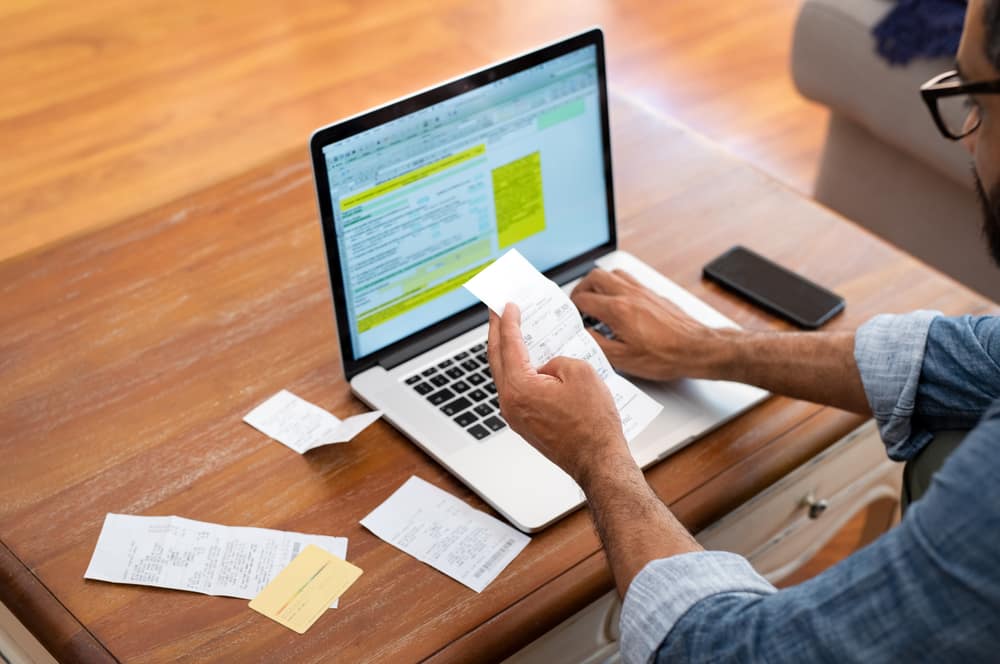
A crucial first step to do is to add up all your expenses including the interest rates to know the exact total debt you now need to pay off. Thinking it’s “around” a certain number is not going to help you understand how much you spent and make an exact plan to pay it off.
Once you’ve taken a look at the numbers, make sure you take the time to identify the root cause of why you’ve accumulated so much credit card debt over the holiday season. Don’t stress over it, don’t wallow in guilt over it, because there’s no point beating yourself for taking on debt. Accept the fact that debt happened, and you’re handling it and looking for resources to help you move forward.
Make a realistic debt payment plan
If you have a small amount of holiday-related debt you will need to make sure to pay it all off in January. If possible knock all your holiday debt out quickly in a month or two, three months at the most. If it will take any longer than this, it’s time to create a realistic plan to eliminate the debt as quickly as possible. Paying down holiday debt in two or three years isn’t worth the unease and sleepless nights. If you’re going to pay just the minimum monthly payment, you’re never going to get out of debt. And, it’s also not realistic to altogether stop spending for the duration of your debt repayment, especially if it’s going to take longer than a month or two.
A realistic debt payment plan takes into account that in real life you will spend for things like the occasional coffee or takeout order, and so you will need to factor this in on what you expect to spend in a normal month including fixed costs for your housing expenses, food, and bills plus your current savings and debt payments.

The difference between paying your holiday credit card debt off in three to six months and in two years can be huge, and so the aim is to zero out the debt as quickly as possible. Make more than the minimum payment wherever possible. If the minimum amount is all you can afford now, then pay that. Don’t stop paying, or you’ll get into deeper debt trouble. Focus on paying off your most expensive debt first, which is the one with the highest interest rate, and then move on to the one with the next highest interest rate and so forth until your debt has gone down. Consider if a balance transfer credit card might be a good move in helping you curtail holiday credit card debt. A debt consolidation loan can also be an option if it can result in lowering your interest rates.
Ask for help
Don’t be ashamed to discuss your financial situation with your partner and other significant people in your life. In fact, get the whole family involved if possible. You’ll be surprised how resilient kids can be and often they will have some really creative ideas on how to cut back on spending habits. This will take some of the stress and pressure of dealing with debt on your own.
Getting professional help from trusted financial experts like an or a licensed insolvency trustee can also be beneficial in helping to put your total debt picture in perspective. You may think your debt problem is unsolvable, but these debt experts can help you find ways to tackle your debt in payments you can afford.
Your best course of action to pay off holiday credit card debt quickly is to relax, take a deep breath, take an objective look at your situation and then figure out what you need to do to fix it. Don’t avoid the problem as it’s going to catch up on you anyway sooner or later. Face the debt head-on, and do everything you can do to get out of debt quickly so you can enjoy the rest of the year free of debt.
Crushing Debt – Why You Should Pay Off Your Debt
| Richard | Today we’re joined by David Trahair.
David Trahair is a Chartered Professional Accountant (CPA, CA), and a personal finance writer, trainer and e-Learning content developer. He is also an author of six books on personal financial issues including three national bestsellers. He was a columnist for CPA Magazine from 2014 to 2018. His book Crushing Debt: Why Canadians Should Drop Everything and Pay Off Debt outlines the evils of debt and how easy it is for debt to spiral out of control with examples of real-life stories of debt disasters. If you are a Canadian who is already struggling with debt, Crushing Debt will motivate you to face your financial problems and will show you step-by-step the most appropriate solution to getting out of your personal debt hell. Filled with proven advice, Crushing Debt is a call to action on an urgent and debilitating problem for far too many Canadians. In your book, Crushing Debt, you say that not all debt is the same. Can you provide us with an overview of that and perhaps just maybe pay some special attention to the type of debt that gets more Canadians in such financial trouble? |
| David | Sure. Well there’s two basic types – there’s installment debt and revolving debt. Installment debt is any debt that requires a partial repayment of principal. So, a mortgage is an example of installment debt, a car loan is an example of an installment debt and what that means is that if you just stick to the payment schedule you automatically have paid off the debt at the end of the term for a car loan and the end of the amortization period for a mortgage. So, by definition, you’re forced to pay it down. |
| Richard | This includes both principal and interest, and everything gets paid off? |
| David | That’s correct, both principal and interest. So you’re paying the cost of borrowing as well as the original amount that you borrowed.
Revolving debt is different than that. Revolving debt just requires you to pay usually a small amount every month to cover the interest. So, for example, a line of credit, even if it’s a home equity line of credit, you get a certain amount of credit that you can borrow and all you have to do is make the monthly payments or whatever the payment terms are and you’re good. If you stay below the total amount you can borrow, you’re not required to pay down the principal. Credit cards are another example. You can borrow up to your credit limit and then you only have to pay the minimum payments every month and in some cases that’s not even enough to cover the interest, let alone pay down the actual debt. So, I believe that the real problem is with the ease of availability of this revolving debt, the ease of availability of getting credit cards, for example, because people aren’t forced to pay it off, they end up just trying to cover the interest, just paying the minimum payments, bumping up to that credit limit and then just staying there. I think that’s the main distinction is those two types – the ease of availability of the revolving credit is the big problem today as I see it. |
| Richard | You mentioned in your book, the concept of “borrowing binge,” it’s the way you refer to it. |
| David | Yeah. |
| Richard | It would appear to me that the revolving credit as you described it, it lends itself more to this idea of a borrowing binge than fix credit. |
| David | For sure. For sure, because it’s essentially cheaper to get. You think about your cash flow you’re allowed to go and buy something that you don’t have the money to afford to buy and then all you have to pay is a small monthly amount thereafter. if you bought a car or a house, your payments are much larger because a good chunk of that is the principal that you’re required to pay back. The other interesting thing I find is that this concept of good debt versus bad debt. I guess it’s similar to the revolving and installment in some ways. I mean, good debt is generally seen as installment debt, for example, a reasonable mortgage to buy a home is usually considered good debt because you’re acquiring something that hopefully is going to appreciate in value, so you’re making a good investment as long as you can afford it. Another example of good debt is often student loans, you know, you’re borrowing to get educated so you can make more money in the future. Bad debt often is revolving debt. So you get a credit card, you know you can’t afford to pay it back, and you go on a great vacation down the Caribbean that you want to go on but you can’t afford to pay off that credit card when you come back. It’s expensive revolving credit, without any associated assets, no investment that you’ve got, it’s just — just fun. |
| Richard | You mentioned in your book that the Canadian Bankers Association did a survey that indicated that 56% of people using credit cards pay them off monthly, leaving 44% that don’t. Which means they’re carrying debt from one month to the next, right? |
| David | That’s exactly right. |
| Richard | Do these numbers surprise you in any way? |
| David | Yes, I would say they surprised me. I would have thought fewer people pay it off. The problem with that statistic from Canadian Bankers Association, which is the spokespeople for the big banks, is that it’s based on survey data. So, they’ve surveyed people and asked them whether they pay off their credit cards. So, you must take it with a grain of salt. What I would like to see is, I would like to see the banks’ general ledgers showing me what the receivables are, and the banks will obviously know – it’s their business. |
| Richard | You want to see what produced those numbers. |
| David | Exactly I want to see the raw data. How many credit card revolvers are there? But if we assume that number is right, then 44 percent is a terrible number. I mean that’s approaching half the population can’t afford to pay off their credit cards. You know I’ve been writing about and thinking about personal finance for almost a couple of decades now and I can’t think of a worse investment than revolving credit card debt. It’s often at 20 percent or even more than that, it’s the worst investment you could make because that interest is compounding against it. |
| Richard | If it’s if it is debt. In other words, if it is not paid off. |
| David | Correct. |
| Richard | If it’s paid off at the end of every month, most credit cards don’t pay any interest at all. |
| David | That’s right. I mean, you know, if you can afford to pay it off every month, the credit card is a great thing. You buy something, you don’t have to pay for it for three weeks, there’s no interest charges. But if you can’t afford to pay it off, the table is totally flipped into, I would say, one of the worst investments you could possibly make. Great investment for the financial institution that you owe the credit card debt to because they’re recording interest receivable at 20% or more and compounded usually monthly. So compounding is great for them, it’s great for the investor- the person who’s advancing the money, but it works against you when you owe. |
| Richard | Perhaps because I’m a simple country boy and all that, you could explain the idea of compounding to me. |
| David | Sure. I investigated this for an article I wrote for CPA magazine a couple of years ago and basically what it means is, say you’ve got a 24% interest rate on your credit card. Many credit cards use an average daily value method of calculating the interest. What they’ll do is, at the beginning of this credit card period, say you owed $1,000, then they literally calculate how much you owe them every day during that period. So, you buy something for a hundred bucks then your balance goes up to eleven hundred, you make a payment, it goes down. |
| Richard | Right |
| David | So, they get the average daily balance for that month, then they multiply by the twenty four percent interest rate per year, times whatever the number of days and the period is, say, thirty thousand. |
| Richard | Essentially a month’s worth if you’re right, two percent. |
| David | Yeah, two percent or thirty divided by three hundred and sixty-five and they add that to the amount you owe at the end of the month. So essentially this method means that interest is compounding monthly, because the interest gets added to the balance and in that next month it’s included in the balance that you’re paying further interest. |
| Richard | And this becomes the famous story of paying interest on interest. |
| David | It’s interest on interest. It’s terrible when you owe, it’s great when you invest. Compounding interest is great when you invest in, like a GIC. In fact, you want a more frequent compounding period when you invest, but when you’re on the other side, it reverses. That’s the worst thing. |
| Richard | The GIC is where the bank’s paying you rather than you paying the bank. |
| David | Exactly |
| Richard | Many of the people listening to this might very well be baby boomers like me and are more than a little interested in what happens with retirement. If during your working life, you’re in the habit and you actually over that time spend more than you’ve made, what’s the effect on retirement? |
| David | Well the projection for retirement for people who are spending more than they make while they’re still working is a horrible thing to consider because if – I mean personal finances are pretty simple, right? You’ve got your take-home pay, that’s the money you get to put in your bank, and then you’ve got your spending. So, you’re offside if your spending is greater than your take-home pay and that results in credit card debt. If you’re in that situation and then you think about when your income gets cut off, i.e. when you retire, your income is going to go down significantly, often spending doesn’t automatically go down significantly when you retire. Many people continue to spend a similar amount after they retire or it might even go down a little bit, so if you haven’t saved anything then really you’re banking on the two main pension plans in Canada – Canada Pension Plan and old age security. So, let’s throw some numbers out right, Canada Pension Plan pays about thirteen thousand dollars a year if you’ve paid it enough over your max in your life. |
| Richard | The maximum. |
| David | Right. But most Canadians come nowhere near that. The average amount for people who turn 65 in 2019, beginning of 2019, was only about 7,000 from Canada Pension Plan. |
| Richard | That low, huh? |
| David | Yes. People can’t bank on the max because they might not have paid in enough for the required number of years. Let’s say seven thousand dollars from CPP. Old age security, six hundred and seven bucks a month, right now, about seven thousand a year, so an individual must live on… |
| Richard | thirteen hundred a month? |
| David | Yes, about fourteen thousand a year combined CPP average and old age security. If it’s a couple you double that. If you haven’t saved anything else you got to live off that, okay, and most people, it’s insufficient, it’s not enough money. |
| Richard | So, the part-time job at Walmart. |
| David | Then that’s when you end up having to go back to work even if you didn’t want to. So I mean that’s why I think people like you and I need to try and educate people about the dangers of spending more than they make now and try and bring in how bad this is going to be in the future if they don’t get things back on track. |
| Richard | That’s very hard for us to truly imagine the future. |
| David | That’s the problem. |
| Richard | Or make it real first. |
| David | That’s the problem. |
| Richard | And if we don’t then I suppose it’s very hard to overcome the habits of a lifetime. |
| David | That’s right. |
| Richard | I see this as you probably understand in my business, I see this a lot. People coming in to see us in their seventies and eighties and it’s largely because their lifestyle hasn’t changed. They may be able to change their lifestyle that much. Sometimes I find it’s beyond their control totally, you know there’s all kinds of family demands and you know things like that still happen to people whom in spite of the fact that they’re now senior citizens. If their habits have been different earlier, they might be in better shape. |
| David | You know, it’s very much a personal thing. I like to say that you know we all lie on this big scale. We’re either very cheap and frugal, the other end of the spectrum are those that spend a lot of money. So all of us lies somewhere on this scale. |
| Richard | Like any other bell curve. |
| David | Exactly like a bell curve. So you know, I think the best thing we can hope for is some sort of happy middle ground because the people, the ultra-frugal people who never spend a dime, never borrow, don’t have kids because it’s too expensive, don’t go on vacations, they’re going to die with a multi-million dollar portfolio. |
| Richard | How many kids do you have, David? |
| David | I’m not on this end, I have two kids. What’s the point of that life, that’s too extreme? But the other end of the scale, which I used to think was really an American problem, it’s not. As you probably know better than me, there are lots of Canadians that are spenders. |
| Richard | Oh yeah. Let’s call it a universal problem. |
| David | Okay the universal problem. So I think the best we can do is try and get these spenders to loosen up a bit and try and move up the scale closer to it, to this end. They don’t have to become this. |
| Richard | Maybe like, maybe you mean tighten up a bit. |
| David | I guess tighten up a bit with the finances. |
| Richard | It’s very very difficult to do. |
| David | I know it’s difficult. |
| Richard | Today’s world, we’re bombarded with everything and hardly anybody is bombarding us with the idea of saving money. |
| David | No, no I mean it is keeping up with the Joneses, advertising, this, you know, social media I think is the worst thing ever invented almost for personal finance because you see this ideal life of all these people who are perfect and rich who can afford all these things and you try and do that by borrowing. |
| Richard | So if a person is in financial trouble, what steps can you take to turn the situation around? |
| David | Well the first thing I recommend is that the person or maybe the family we’re talking about is to start to track where their money is currently going. In my opinion, whatever you track tends to improve, like for example, your Fitbit or your fitness tracking watch, if you’re aiming for 10,000 steps in a day you’re much more likely to do that because you know how many you have done. Similar thing with personal finances, because we aren’t required to do this, there’s no government authority requiring us to track our personal spending. We’ve got to track our business expenses for tax purposes, but not personal spending and because we don’t have to do it, most people don’t. I think that’s a big mistake. I think if people just took the time to track even for a few weeks or a one-month period, ideally you do it ongoing every month, but just for one-month track where the money in your family went. Now this is harder for those people with multiple accounts, multiple credit cards, multiple bank accounts, that makes it very difficult because you’ve got so many different sources that you have to summarize. |
| Richard | And you have to do this together too. |
| David | That’s right. You want a comprehensive summary. You don’t just want what you spent cash on, but what did you spend with your credit cards, your bank accounts and cash. I know its labor intensive, and most of your viewers aren’t accountants, but that information is golden because that’s your personal fingerprint, that’s very personal to you or whoever is doing the tracking. I think that’s step number one to try and convince people to sort of tighten up. Because if you see where the money’s going then you’ll know, okay here’s the big money drains then the next time it comes to spend that, it might twig you to say oh actually that’s going in this category this is an area we should cut back. So personal financial tracking whether it’s doing it manually, if you’re lucky enough to have a computer with spreadsheets maybe download your banking information. There’s a website called mint.com that I have no affiliation with, owned by Intuit, where you link your bank cards and your credit cards and it does the tracking for you. Any method you can use to get a summary of where your money’s been going, I think is step number one. |
| Richard | Essentially in doing that you’re making it real for yourself, right? |
| David | Exactly. |
| Richard | Numbers to a lot of people probably are just that — numbers. They become real when you translate the number into a large coffee at Tim Hortons or something like that. |
| David | Yeah and you know I’m all for cutting out the small things but really if you want to make significant progress it’s the big things that you should really be thinking about if you can cut them back. For example, those people that have a house with a mortgage, it might make sense to consult a mortgage broker to try and get a better mortgage deal the next time when your mortgage gets renewed. Think about the big expenses. Think seriously about your car strategy, cars are huge cash pigs for most people. Whether you buy or lease, they’re going to suck money out of your pocket for the rest of the time that you own that car. Think seriously about the car that you’re going to get. Do you need a car? Can you use the alternatives – ridesharing, things like that? So yes, I’m all for thinking about the small things but personal financial tracking or detailing your spending will show you where the big opportunities are. |
| Richard | Don’t you think that for a lot of people, perhaps to a lot of our viewers here, the concept of for instance, do I need a car? That’s not something they’re going to ask themselves. In a real way I think I understand this. If you’ve you got to get to work and you got to get there at 7:30 in the morning, I’m not saying it can’t be done by bus or anything like that. The reality is, if you’ve got kids and sometimes just doing the shopping and things like that, you may not need a Mercedes Benz to do it. But to say do I need a car? Most people are going to come away saying yeah, I do. Now if you live downtown and everything is generally footwork if you’re in the center of a city, that’s often a strong argument because of the cost of maintaining it. But if you’re in the semi-suburbs or suburbs and all that, having a car is almost a necessity. |
| David | That’s right, but then it becomes, okay well what car am I going to get? I think that that’s where a lot of people I think get into trouble. They need a car, no question right, then it becomes, well, how are they going to buy that car? Most don’t have $25,000 or whatever’s sitting around so it’s either a car loan to buy it or leasing. I deal with this in one of my other books – the car lease versus buy decision. Leasing is not necessarily bad, it’s just more complicated than buying. There are more factors that you need to consider. I think the problem that people get into with leasing is if they go through the calculation they say okay I can afford a car with a car loan of say four hundred and fifty dollars a month and I’m going to pay that car loan off over four years, keep the car for eight years, they get four payment for years, brilliant, So they don’t go and lease that same car for say $300 a month, they go and lease a more expensive car for what they could afford to pay for months and then sentence themselves to lease payments for the rest of their life. That’s what I think gives leasing a bad name. But yeah, no doubt about the fact that for many people a car is a necessity, but it is a big item. If they track their spending and all the costs associated with owning and maintaining and running a car – oil, gas, maintenance, insurance – it’s often a big chunk of cash for most people and the bigger the car the bigger the cash outflow. |
| Richard | It certainly is one of the major items in a family budget, a monthly budget. |
| David | Yeah. |
| Richard | One of the things you are here about, let’s just segway off to something else here for a minute, the idea of a reward card or reward cards. You have some thoughts on them. |
| David | Yeah, well, basically for non-credit card revolvers, for people who pay off their credit cards every month, then as a myriad of options, a cash back card, travel card and you might as well get the card that’s best for you. |
| Richard | In other words, use the rewards. |
| David | Use the rewards, right. It doesn’t cost you anything because you’re paying off that balance.
But the value of a rewards card is often around 1% of the amount that you spent. For a credit card revolver that is paying interest at 20% or more, that’s a terrible trade-off. My suggestion for credit card revolvers, if you can’t afford to pay out the credit cards, just get rid of any kind of, you know gold card or any kind of benefit card. Call the bank up and say replace my gold card with a base card, no bells and whistles. Often the interest rates are half or less. |
| Richard | Is it? |
| David | It often is yeah because you know you’re getting tricked essentially by thinking you’re getting all these rewards right there. |
| Richard | And you’re accepting the idea that the interest rates are offset by rewards and probably not paying any attention to it. |
| David | Probably not, but if you sat down and did a pure mathematical analysis, a rewards card where you must pay them the twenty percent is a terrible investment. It just doesn’t make any sense. |
| Richard | The math doesn’t compute. |
| David | The math does not compute, no, no. |
| Richard | Another thing we hear a lot of and see some of certainly in my business is the balance transfer and offers. |
| David | A balance transfer offer and the first thing with respect to that is it’s a very competitive market, these deals are always changing but a balance transfer offer will come from another credit card company. You might get junk mail from your credit card company asking you to transfer balances from another credit card and essentially what the new company will be doing is saying, look you owe $10,000 on your other credit card and if you transfer that to us we’ll charge you 0% for six months. Sometimes it’s better at 12 months, sometimes it’s two percent. You immediately reduce the interest you’re paying, say it used to be 20 percent on the previous credit card is now down to three years zero percent. The problem is that period expires and that’s why these other credit card companies are offering that to the person because they know the person is unlikely to change their attributes, change their ways, their habits. After that six-month period that credit card company is going to be the one that’s charging twenty four percent. That’s why they will be willing to take that financial hit of offering them this seemingly great deal. |
| Richard | We just hit on something there – the idea of getting into that rut. I have had the same car and home insurer for the last 52 years; do you think I’m in a rut? |
| David | Well, it may be worth shopping around once in a while. |
| Richard | Yeah but I have a tendency not to be interested in shopping around. I’m reasonably satisfied with everything. I don’t think I’m overpaying; I may be, I don’t know. Some amount of inertia sets in, the same thing must happen with credit cards, right? And this is why the credit card company can afford to offer six months no interest because once you’re there for six months you’re not going to move. |
| David | That’s right yeah because I mean life is busy people have kids to raise and then driving everybody all over the place going grocery shopping and most people at the end of the day they’re beat. They don’t want to sit down in front of a computer and search for different credit card options or whatever it is and that’s the advantage the financial institutions have is this inertia among consumers. |
| Richard | Sneaky Devils |
| David | Well, they know how to make money, right. |
| Richard | We’d like to hear your views on HELOC – home equity line of credit. |
| David | Home equity line of credit are becoming very popular. Essentially it means if you own a house it’s worth one amount and you have a mortgage amount that is lower, there’s room that you could borrow on a home equity line of credit. Because the financial institution is lending you money and they have a claim on your house, if you default, the interest rate is lower than a regular unsecured line of credit. This is almost irresistible for many Canadians obviously. Because the housing markets been doing pretty well, they’ve got room and they borrow for who knows what. House renovations, maybe trips. |
| Richard | It seems to me very attractive to the senior citizen types, like me. |
| David | Well for anybody with cash flow issues, it’s very attractive. |
| Richard | But it seems to me that as you get up in years that maybe you’d want to take those trips that you’ve never had a chance to take. |
| David | Well, this brings up the whole area of reverse mortgages. |
| Richard | Which is the same thing, isn’t it? |
| David | Well it’s not technically a home equity line of credit, it’s a different product. The problem is that it’s very expensive, interest rates are high, there’s many fees you have to pay and there’s no competition. It’s the home equity home equity bank, I think it is, is the only one that offers a reverse mortgage so you can’t shop around. The problem is, while it’s attractive to get that money up front, they’re charging you a higher amount of interest so that when you move or pass away that reverse mortgage is often a very high balance. It’s a very ineffective way or an expensive way to get cash out. It’s much better to apply for a standard home equity line of credit at a much lower interest rate, and again this gets into your credit score and your income and all that. |
| Richard | Have you run across people beyond the age of 65 who likely have retired or about to retire. Certainly, their income is going to be heavily based on their pensions. These people seem to have a great deal of difficulty in getting any kind of credit, even with equity in a home. Have you run into that? |
| David | Yes, I know because the banks have their checklists and their ratios to look at with respect to your income usually according to your tax return. You got to conform to these ratios. I mean if we can recommend to people, I recommend to people, even before they retire while they still have a job is the best time to apply for a home equity line of credit. Then that’s much easier because as you say you go into retirement your income goes down you might not be eligible for it. |
| Richard | I think there’s more to it than that. There’s the negative side of lending, not every loan will work out the way it was intended to. People will run into problems and all that, and the lender very often has to take action to recover his money which will take the form of collection calls and lawsuits and things like that. This is what I see every day when people come to me when these things are happening. One of the things that I’ve seen is the difficulty people have had to solve their problem through some form of consolidation. Because now they’re on the fixed income pensions and creditors are very reluctant to lend money to somebody with only that kind of income because that kind of income can’t be seized. |
| David | Gotcha, okay that makes sense. |
| Richard | Probably not something that you see all that much at your end of all of this, but it does affect how people might look at a home equity loan type of thing or reverse mortgage or something, it may be the only place they can get money. |
| David | Yes, I think reverse mortgages even though it’s expensive and there’s many fees, if it means being able to afford groceries then go for it. |
| Richard | Or that trip to Spain. |
| David | Perhaps. |
| Richard | David thank you very much. It’s been very, very informative and I’d like to remind everybody that you can get much more of this, you can find out all about David’s other books – Crushing Debt, which you didn’t explain to me – Are we crushing the debt or is debt crushing? |
| David | You can read it both ways, so it depends who you are whether debt’s crushing you or I’m telling you in the book how to crush your debt |
| Richard | A lot of double entendre. I’m sure the rest of the book is just as good. |
| David | Yes, I think |
| Richard | Also, you operate a blog? |
| David | I have a website, it’s www.trahair.com |
| Richard | I never talk about hair. But anyway, thank you very, very much for all the information you’ve imparted to us and, well, thank you |
| David | Thank you. |
What Too Much Debt Looks Like In The Greater Toronto Area
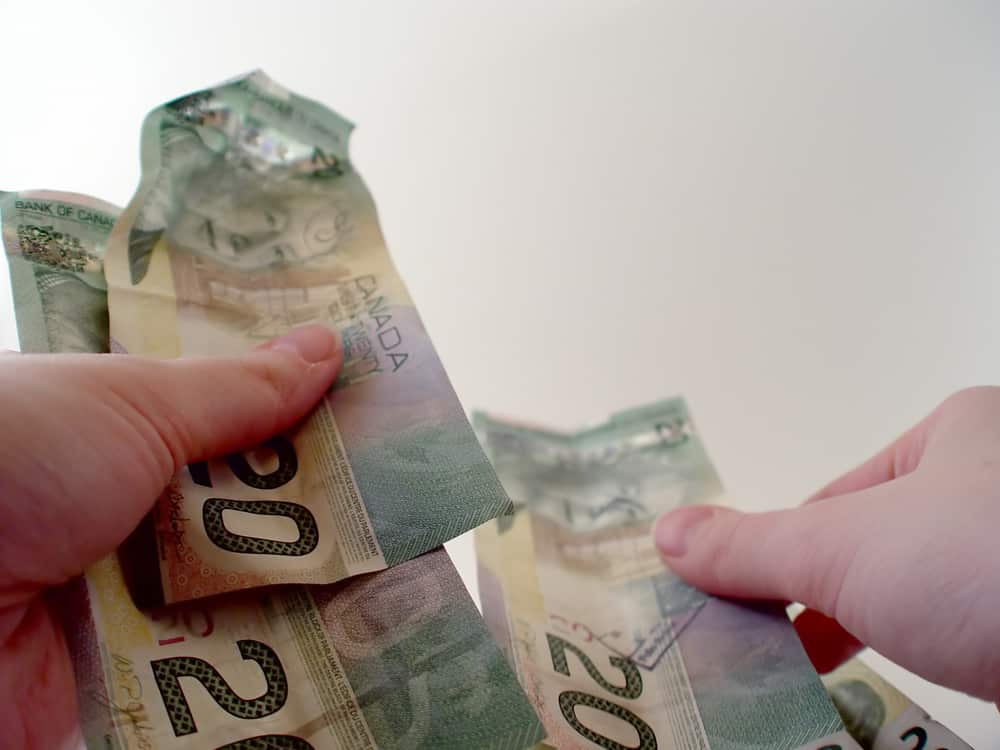
According to Statistics Canada, Canadian families now roughly owe $1.78 for every $1 they earn. These debts include consumer credit, mortgage and non-mortgage loans. Yes, we’ve got too much debt and piled up credit card charges for home renovations and eating out, for long-term car loans to buy up new vehicles, and not to mention those home equity lines of credit that allowed us to borrow up to 65% of the value of our home.
Some of us are already feeling the pinch of owing too much debt, with almost a 10% increase in the number of consumer insolvencies compared to last year, according to the latest figures from the Office of the Superintendent of Bankruptcy Canada.
“Personal insolvency growth continues as a result of consumer credit stress, individuals and families are struggling with overwhelming debts,” says Chantal Gingras, Chair of the Canadian Association of Insolvency and Restructuring Professionals (CAIRP).
And it seems we’re not slowing down. Despite years of counselling from the Bank of Canada against rising debt levels, many Canadians still aren’t lightening their debt load even though interest rates are rising and borrowing costs are climbing.
“Oh, we can manage our payments, we’re all good,” we keep saying. At least for now you can, but all that can change with a few unexpected calamities.
“If there is a period of slow economic growth in the future, Canadians could face job losses or decreased income putting them in an even worse position to manage their increasing debt levels,” says Scott Hannah, the Founder of the Credit Counselling Society.
Look, we all want to have a new car, a new home, dine in fine restaurants and enjoy luxury vacations, and grand shopping sprees. Who doesn’t, right? It’s great if we can afford them, there’s absolutely nothing wrong with spending on these things — as long as we don’t swim in debt for them.
But how exactly do you figure out that you’re close to being in over your head with too much debt? Let’s take a look at what too much debt looks like:
What Too Much Debt Looks Like to Lenders
In general, banks and other lenders look at your Total Debt Service Ratio, or TDSR, which is the portion of your income needed to cover all of your debts. Lenders will look at all of your monthly debt payments plus heating costs and taxes if you own your house and divide this by your gross income. Standard TDSR should not be higher than 40% of your income. So when you add up all your monthly credit card payments (minimum or partial payments each month), line of credit payment, car payment, mortgage payment, alimony and payments for heat and taxes, the total amount of all of these should not be more than 40% of your monthly gross income (which is your income before taxes). In other words, banks will not lend you money if your TDSR exceeds 40%.
If you are applying for a mortgage, lenders will also take into consideration your Gross Debt Servicing Ratio or GDSR in addition to your TDSR. GDSR is the portion of your gross income that goes towards paying all of your monthly housing costs, which can include principal mortgage payment, interest, property taxes, and heating costs (PITH) plus+ 50% of condo fees if applicable. The standard is less than 32%. Lenders will not give you a mortgage if your GDSR is more than 32%.
What Too Much Debt Looks Like to Your Budget
First order of business, ask yourself: How much do you need to live a lifestyle that is comfortable and acceptable to you? For this, you need to figure out the amount of money you need to support your way of living now as well as allow you to save for the future.
Identify all your sources of income – take home pay and extra income from a side job.
Calculate the cost of living expenses (also called non-discretionary expenses) – jot down every cent you spend that you must pay each month, including food, rent, mortgage, utilities, credit card payments, car loans, insurance payments, taxes and personal necessities
Calculate financial goals – amount for investing or saving after paying all non-discretionary expenses
Calculate discretionary expenses – amount for spending on non-essential items, restaurant dining, vacation expenses, luxury clothes, entertainment, etc.
Obviously, if you have no money remaining after paying bills then your income cannot support your financial goals as well as your unnecessary spending habits. If you must incur debt to pay for discretionary expenses, then you have too much debt.
If you routinely carry on debt, use your credit cards to pay for grocery bills or other utilities, constantly overdrawing your line of credit account or go overboard with an overdraft, and always have to take on a payday loan or a consolidation loan, these are warning signs that your budget is too tight and that you may have too much debt and may be heading for trouble.
Budgeting is really one of the smartest things you can do to keep yourself from accumulating too much debt. A budget will help you manage your finances and help you see how much debt you can afford to make payments on based on your income each month. It can really help you to live within your means and not spend more than you earn.
Too much debt can mean different things to different people, but the key is to figure out the amount of debt you have to how much money you make a month. The general rule is that your debt level should not be more than 40% of your monthly income.
Use the guidelines:
Total Debt Service Ratio (TDSR) over 40% = too much debt
Gross Debt Service Ratio (GDSR) over 32% = too much debt
Personal budget – more than half of your income is used to pay your debts = too much debt
Ideally, the less debt you owe, the better off you are. A little bit of debt is unavoidable, even necessary, to help you meet financial goals. Always live with a spending plan so you can manage debt payments efficiently and avoid going into too much debt. If your budget is too tight, you are close to the edge of having too much debt. When a financial crisis hits you, your budget is wiped out and you’ll be forced to take on debt for everything you need to pay for. Tap on all the resources you can to get back in control right away before your debt levels get out of hand.
When your debt and bills exceed your income, needless to say, you’re in a debt crisis and you need to make a committed decision to get out of debt without delay. Check out your debt solutions and options here.
Getting out of debt on your own
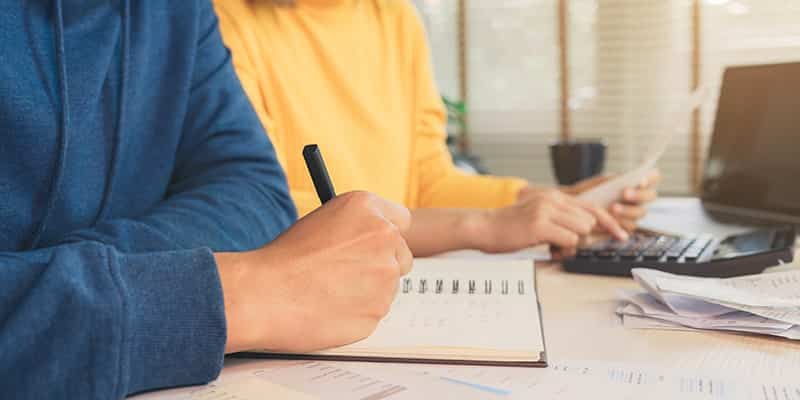 Tax season is here. Like many Canadians you may discover that you now have a tax debt to add to your regular commercial debts: credit cards, loans, etc. This can make it a very stressful time of year. Of course, if you are one of the lucky few who has minimal or no regular debts and have the means to pay what you owe in taxes, you have no problem. If you’re not, you do.
Tax season is here. Like many Canadians you may discover that you now have a tax debt to add to your regular commercial debts: credit cards, loans, etc. This can make it a very stressful time of year. Of course, if you are one of the lucky few who has minimal or no regular debts and have the means to pay what you owe in taxes, you have no problem. If you’re not, you do.
As nervous as all this might make you, keep your eye on the end target – being debt free. It might help you deal with things more easily. Taking control of your situation comes with its own rewards: first, you’ll have less stress, and second, you’ll have more cashflow to put to savings.
To start, if you’ve decided to tackle your debts alone, you need a clear plan to help you determine:
Whether you can do this using only your own resources
How much can you afford to put towards paying off the debt?
How will you find the money to pay the debt?
How long it will take to pay off the debt?
Next, your payment options may be:
Making monthly minimum payments
Using your tax refund
Talking to your creditors to change your payment terms
Or, getting a consolidation loan
Do you know exactly how much you owe? This is a simple calculation. Be sure to include auto loans, payday loans, credit cards and other loans like family loans and medical bills. Start by itemizing your debts by gathering your most recent financial statements for all loans and credit cards. You may also decide to check your credit report from each of the credit bureaus (Equifax Canada and TransUnion Canada).
Next, list all our debts on a worksheet or computer program, specifying:
Name of creditor
Balance due
Interest rate
Minimum monthly payment
From this list you can create a monthly budget:
A: Add up our monthly income after taxes and other remittances.
B: Tally up all our monthly expenses, which will include our rent or mortgage payment, utility bills, childcare, student loan payments, insurance, groceries and other monthly household expenses.
C: Subtract all of our monthly expenses from our monthly income and what’s left is the amount we have left to pay off our debts. The formula would basically run this way: A minus B = C.
If you think the amount going towards your debt payments is too small, review your expense numbers and look for ways to reduce your spending. Also, consider ways to make more money so you can pay off your debt faster. It’s important to remember that the higher A is and the lower B is, the faster you’ll reach the finish line.
Another option is to try to obtain better terms. Now that you’ve come up with a clear repayment plan, you can try to negotiate better terms with your creditors. Remember: nothing is necessarily carved in stone. With a good plan, you actually have something of value to offer the creditors. Your main goal is to negotiate a more favourable interest rate. That would make the finish line closer still, which makes a big difference.
Here are some tips to use when speaking to your creditor about lowering your interest rates:
Ask if you qualify for a balance transfer on a zero interest or low rate interest credit card. This can save you a lot of money in terms of interest.
Check out student loan consolidation and income-based repayment plans that are exclusive to high level student loan debts.
Look into whether you can refinance a high-rate auto loan into a lower-rate.
Inquire if you can consolidate your debts into a personal loan or home equity loan.
Richard Killen, Licensed Insolvency Trustee and author of the new eBook The Glass is Half Full which is now available to be downloaded for free from iBooks, Amazon, Indigo and Kindle. Richard Killen & Associates, with offices conveniently located across the GTA, have been helping Canadians resolve their debt issues since 1992.
2 Things You Can Do To Take Control of Debt

If you are struggling with debt, you are certainly not alone. Most Canadians, if not all, have debt. Some of us have just a little bit of debt and that’s completely normal, and we must know how to take measures to keep it at a manageable level and avoid becoming trapped in a cycle of debt.
On the other hand, there are also some of us who have a large amount of debt and it’s creating stressful financial issues as we try and juggle payments on the debts and put more effort into meeting the monthly payments on time.
And then there are a number of Canadians, unfortunately, who have out-of-control debt that has really become a burdensome problem and causing them to feel a deep sense of shame, guilt, and embarrassment to the point that they suffer physical and psychological health issues, such as anxiety and depression.
Managing debt is the very first step to prevent it from getting out of control. That’s really the rule of thumb when you take on credit. Once you take on any type of debt, it can affect your entire financial life. That’s why it’s so important that you take the steps towards being the one in control of your debt, instead of debt taking over your life. If you are in control of your debt, it will make you feel confident about being able to pay it off in a timely manner and you won’t be afraid about facing any financial demons over time.
Here are two important things to understand to help you always take control of your debt:
Know how much you owe.
Monitor your debt so that you are always aware of how much you owe. You monitor your debt simply by creating a detailed budget to plan your expenses. A budget will provide very important information for effective debt management. It will show you:
- The net income you have available to spend.
- What your regular expenses are (e.g. rent, childcare, food, transportation, savings).
- The total of the payments you have to make each month for your debts (e.g. credit card debts, mortgage, car loan and other loans).
Make sure you list each of your debts, one by one, indicating the total amount each creditor it is owed, the monthly payment you need to make, and when the due date is. Check your credit report to verify all your existing debts and to make sure you didn’t miss putting something on your list. Total up your expenses and payments and subtract this from your net monthly income. Depending on how much money you have left over at the end of the month, you’ll need to decide whether you have too much debt or if you feel comfortable with the level of debt you have now. Make it a point to update your debt list as you make payments on the due date. This will help you to stay aware of how much you owe all the time and prevent you from making any financial decisions that will lead to potential debt problems in future.
Recognize if you need help.
For some people, following a realistic budget to pay off debts and plan expenses is enough for them to take control of their debt. However, for others who have bigger debt problems and budgeting is not enough, there may be a need to create a manageable repayment plan to help you pay your debt and other bills each month in order to regain control of your finances.
As soon as you find that you’re struggling with payments and feel that you may have a potential issue on your hands, maybe you’ve made a late payment or think you’re not going to make a payment on time, reach out to your lender right away to find out if they can offer some ways for you to catch up or stay on time with payments. You’d be surprised that there are a number of creditors who are more than willing to work with borrowers who reach out to them for help before they are way behind on payments. Creditors may lower your interest rate, reduce your payment or even temporarily suspend your payments for a number of months until you get back on your feet. The key is not to wait until you’re delinquent because you have more options if you have no missed payments.
If you really cannot pay even the minimum payments on your debts or cannot even meet your basic monthly needs such as buy food or pay the electric bill, then your debt problems are more severe and you may need a more permanent solution to help reduce or eliminate your debts entirely.
At this point, the best thing you can do to take control of your debt is to talk to a debt professional. A licensed insolvency trustee is the only debt expert in Canada licensed by the federal government to give advice about other options for debt relief such as a debt management plan, a consumer proposal or a bankruptcy. Each of these debt solutions have advantages and disadvantages and a trustee will be able to explain each option thoroughly and answer any questions you may have. The trustee will do an in-depth assessment of your financial situation and be able to make recommendations on the best option to solve your debt problems. By getting the help you need, you can get back in the driver’s seat and take back control of debt with some good advice instead of ignoring your debt problem and making matters worse like leading you to declaring bankruptcy.
Taking control of debt is a commitment. You need to be able to manage it responsibly. Even if you have just a little bit of debt, you need to exercise restraint to keep it at a level you are able to manage. If you have more than just a little debt, you need a little more self-discipline to have more control over your debts. If you have more debt than you can handle, it would require you to seek the help you need and make certain sacrifices to get back on top of things.
Debt problems and financial challenges are inevitable in life. They will happen to each one of us at some level and at some point in our life. It’s important to realize that there are solutions to debt problems no matter how terrible your situation may seem to be. There is no need to spend your entire life in debt and allow it to ruin your other financial goals. All you need to do is make the decision to take control of debt and do all that is necessary to improve your financial situation.
Good and not-so-good debt: What’s the difference?
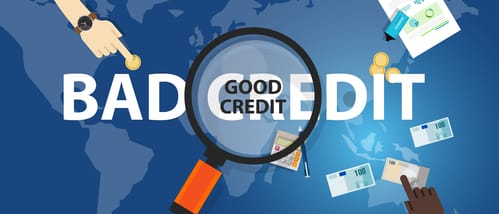
If you use credit with good judgment and with a solid plan to pay it off, you stand a good chance of profiting from the funds you borrowed. It’s important to remember that when it comes to taking on debt, you should approach the decision carefully and only take on debts that will grow your financial worth and/or positively affect your life. The best way to know how to control debt — along with most things in our lives — is to look before you leap. Be sure to ask yourself if the credit is necessary, what will it involve, is there a better way to get what you want than by incurring this debt and how fast will you be able to get rid of it. For example, ask yourself:
- What is its purpose, i.e. the long-term goals and benefits you will achieve as a result of taking on the debt?
- How you will pay it back?
- And, where it fits within your cash-flow budget?
One way to ensure that taking on new debt won’t be an issue for you is to understand the difference between good debt and not-so-good debt.
Good debt generally has the following qualities:
- It is taken on for something that will likely not lose value over time
- It will leave us better off in the long-term and provide us with lasting and, with luck, ever-increasing benefits
- The debt will not have negative consequences on our present and near-future overall financial position
- It will help us manage our finances more effectively
- It will help leverage your wealth
- The debt is used in a responsible way, with details carefully thought out and with the long- term view in mind
- There is a clear and specific reason for taking out the debt
- There is a realistic plan for paying back the debt as quickly as possible
- The debt was obtained through the cheapest and most effective borrowing method available, with the most reasonable interest rate, term and charges
Not-so-good debt has the following features:
- It feels like free money
- It often provides some form of instant gratification
- It will not provide some increase in value to us over time
- It reduces your wealth or offers no opportunities to grow wealth
- It keeps growing, because of the interest rate and supplementary charges
- It seems like it will never be paid off
- It may have an unrealistic repayment plan
How to stay out of debt
The fact is that no matter how much our financial life may have jumped the rails, you always have the power to get it back on track, regain control and avoid debt situations like bankruptcy. You’ve also seen how much of a role our attitude plays in grasping that empowerment. Seeing the glass to be half-full rather than half-empty can make all the difference in the world. If you can manage your credit wisely, you can enjoy the many benefits it offers. As you know, it can be a very useful tool by helping you accomplish important life goals, boost your net worth over time and enhance your quality of life, just so long as you remain the one in charge.
The next logical question likely is: “What can I do to make sure that I do remain the one in control of my debt?” Of course, the short flippant answer is: don’t borrow. But as we’ve already seen, there are times that taking on debt will be necessary. The majority of us may see abstention as too lofty a goal. It can be done, but very few of us will be in the envious financial position of having the money to satisfy all our needs, and our wants, without borrowing. The trick will be to manage it properly and not allow it to take control.
Consider sticking the following reminders to your fridge to help keep you on the straight and narrow in 2019:
- Best way is to stay out of debt completely, don’t borrow full stop. But some are not avoidable:
- Mortgages
- Car loans
- Student Loans
- Impulse — clothing, food, entertainment
- f you actually need to take on some debt, what is it that you are trying to accomplish?
- Have a plan – this is the goal of how you’ll pay of the debt
- Develop good habits and stick to positive financial routines
- Most important, learn to manage your cash flow
- Create a simple cash flow spreadsheet or table; this can also be done through money management software like Intuit Quicken or MS Money
- Make tracking your money an automatic process; enter and update your transactions regularly
- Remember, when it comes to tackling your debt:
- Be honest with yourself about what went wrong
- Make a decision to tackle the problem
- Seek professional advice to understand your options; remember, you’re not alone, keep your pride in check
- Accept the reality of the situation and stay positive
- if it becomes too much for you to handle, never be afraid to consult with a debt expert or professional.
Avoid post-holiday debt stress — create a budget

As we get closer to the holiday season, there is one thing we can all agree upon: the holidays stress us out. Whether we’re juggling an increased social calendar, rushing to finish work before the end of the year, or trying to grab that last-minute gift, we’re all feeling somewhat overwhelmed. Along with all this rushing around is a tendency to over spend. We know we probably shouldn’t, but we tend to shrug it off and think about the consequences later. But then the first credit card bill arrives in January and we’re hit with one of the most difficult kind of stresses to deal with: debt stress.
Debt stress has an overarching effect on our lives. It affects our credit score, our financial independence, career choices, well-being and standard of living. In October, Equifax Canada announced that consumer debt continues to rise; in fact it’s up 5.4% since last year. But, we have it in our power to avoid the pitfalls and handle debt properly to achieve positive and desirable results. To ensure we don’t let debt control us it’s important to remember the difference between good debt and not-so-good debt. For example, good debt should leave us better off in the long-term and provide us with lasting benefits. By contrast, not-so-good debt will not provide some increase in value to us over time and tends to reduce our wealth.
Also, another way to control our debt at this time of the year is to understand how much we currently owe. Then we should set a holiday spending budget to ensure we don’t continue to overextend ourselves financially.
Calculate how much cash and debt you currently have: On a spreadsheet or paper and pencil, list your assets (what you own) and your liabilities (what you owe). Now calculate your net worth by adding up your assets and then subtracting your liabilities. If your net worth is positive, you’re doing a great job of managing your money. If your net worth is negative — or “in the red” — it’s time to be honest with yourself and not take on any more debt this holiday season.
Make a list, pay in cash and stick to your plan: Consider this list a mini-budget. Itemize what you realistically think you’ll need over the holidays, like modest gifts, food, refreshments and decorations. Based on the calculation you did above to identify how much you can afford and put an affordable spending limit next to each category. Your goal is to stick to this plan. There are often great sales in November and December, so do your research to find the best bargains.
Enjoy the season: It is possible to have a great festive season without spending a lot of money. Besides, it’s the thought that counts, not the expensive price tag. It’s also possible to use credit with good judgment and with a solid plan to pay it off. Happy holidays!
Richard Killen, Licensed Insolvency Trustee in bankruptcy and author of the new eBook The Glass is Half Full which is now available to be downloaded for free on this page.
2018 INSOLVENCY & RESTRUCTURING EXCHANGE
On October 26, 2018, Richard Killen, Bonnie Bryan and Michele Meitz attended the 3rd annual 2018 Insolvency & Restructuring Exchange in Toronto.

This is the Canadian Association of Insolvency and Restructuring Professionals (CAIRP) largest one day event of 2018. Almost ninety percent of Licensed Insolvency Trustees, licensed under Canada’s Bankruptcy and Insolvency Act are members of CAIRP.
CAIRP was created as a non-profit corporation in 1979 to advocate a fair, transparent and effective system of insolvency/restructuring administration throughout Canada.
This event is the best place for professionals from consumer and corporate restructuring practices to network and learn together.
We were glad to get the opportunity to meet and hear from fellow CAIRP members, lawyers, members of the judiciary, lenders and government officials as part of the days events.

